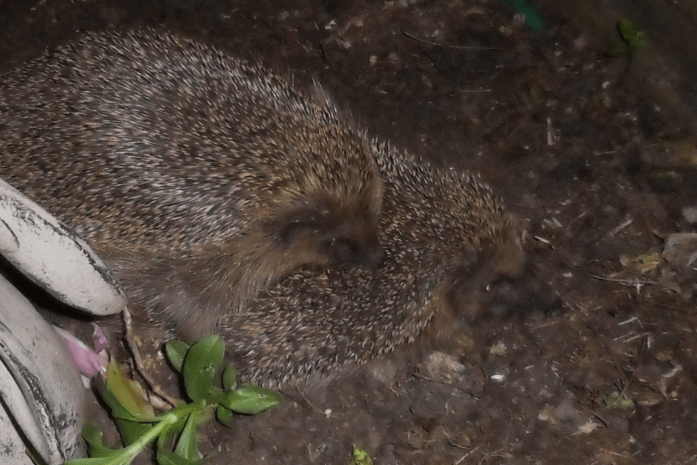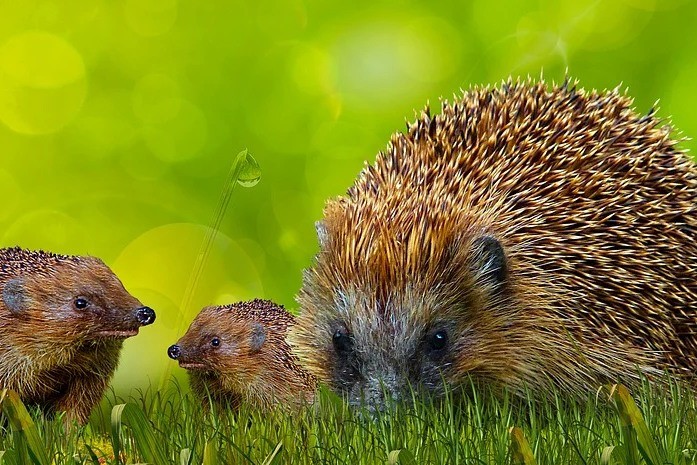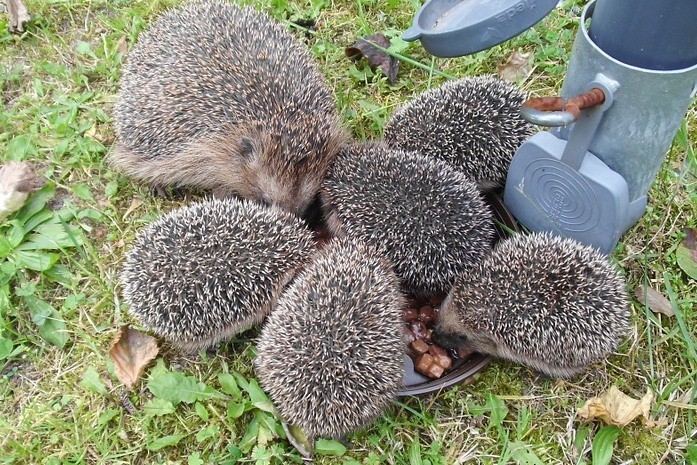Hedgehogs usually have their first litter of babies in the months of June and July. Their overall reproductive cycle occurs between April and September, and mating around May and June. Some females mate weeks later or have a second litter — in both cases giving birth in late summer.
Hedgehogs are considered solitary animals, and the times that I’ve seen them around my area seem to support this. They are, however, mammals just like we are, and they have periods of time when they mate, reproduce, and rear their young.
These animals hibernate for a significant part of the year — usually from October to around March or April — and this is not their mating season. So the question remains: When do hedgehogs have babies? Well, here is what I’ve found out.
Through my own research (and on the off chance that I see a hedgehog mother with her young) I am able to say that hedgehogs mate generally in the spring and have their litters at the start of the summer. Some of this is, of course, anecdotal, but I will go into further detail below.
Hedgehog Mating
As stated before, hedgehogs are indeed mostly solitary creatures with an extensive hibernation season. Once hibernation is over, however, mating can occur directly afterward, and this means as early as March or April.

However, most mating happens later, around May and June — and can continue to occur as late as September. This is common with hedgehog males starting from 8 months to 1 year of age, and females over 8 months of age (most hedgehogs begin mating at around 9 to 11 months of age).
Hedgehog mating involves a courtship process in which a male approaches a female, alternately sniffing her and circling her in clockwise and counter-clockwise directions snout-to-snout.
During this courtship, the male may receive competition from another male, and they may fight each other (with the female sometimes walking away entirely). If the female is not receptive, she may bite or headbutt the male sharply, causing him to hop backward. Alternately, the male will walk away.
If the female is receptive, however, the male carefully mounts her. Mating can be a dangerous activity because of the hedgehog’s spines, and for this reason, the female will flatten her spines before mating.
Male hedgehogs do not participate in the raising of hedgehog young (known as HOGLETS). That said, hedgehogs are promiscuous, with both females and males mating with multiple members of the opposite sex.
Hedgehog Gestation
Female hedgehogs will gestate for about four or five weeks, with the average gestation time being about 35 days. If there is a bit of cold weather during the gestation period, the pregnant hedgehog may turn back to hibernation.
If this is the case, the gestation process will slow down — as a hedgehog’s metabolism slows down generally during a hibernating state. Once the pregnant hedgehog is up from this springtime hibernation, the gestation process will resume where it left off.
When Do Hedgehogs have Babies

Since gestation can occur at any time between March and September, this means that pregnant hedgehogs will give birth sometime between these months, with most instances occurring sometime in June or early July.
The June and July birth period is where a female hedgehog will have its first (or only) litter — with litter numbers usually averaging between four and six hoglets. Larger litters (as many as ten) and smaller litters (as few as two) have also been recorded.
Female hedgehogs are known to mate again later in the season or have delayed first gestation periods. In this case, their babies are born in late summer (late August and early September) causing difficulties for hoglets reaching self-sufficient before the winter (see “Second Litters”, below).
Timeline of Hedgehog Birth
The birth process for the entire litter can take up from several minutes to several hours. On average, the birthing process for each hoglet takes about two minutes. The hoglets, when born, weigh less than one ounce each (anywhere from 3 to 25 grams).
During the birthing process, the hoglets come out with a layer of amnion (an outer embryo membrane) and their spines are surrounded by a skin layer of fluid-filled tissue. This ensures the mother is protected from the potentially damaging hoglet spines.
The mother will eat the placenta and amnion shortly thereafter and then will remain with the newborn hoglets for at least 24 hours before foraging for food for herself. While the mother is out foraging, the hoglets will huddle together for warmth.
At the early phase of giving birth, hedgehog mothers are extremely sensitive to disturbances. For example, if within the first five days of new birth the mother is bothered by outside disturbances, she could potentially eat her young.
After a period of seven days, if the mother is disturbed further, she may move the hoglets to another nesting location. This is done by carrying the hoglets one at a time by the nape of the neck. Hoglets themselves will be able to curl into a ball after 11 days of life.
Hoglets have a diet that is entirely of milk for the first three or four weeks of their lives. Hedgehogs have five pairs of nipples, and their milk is notably high in protein and fat and low in sugar. After about four weeks, hoglets will have grown teeth that will allow them to eat solid food.
Hoglets will forage for a period of ten days outside with their mother, once they have grown their adult teeth. They are weaned completely in a period of six to eight weeks of age. After this period, they will part ways with their mother to forage for food on their own and prepare for hibernation.
Hedgehog Hoglet births and A Spine Growing Timeline
It should be noted that hoglet spines have a timeline of their own. They are born first with small pimple-like bumps on the skin. These become 100 or so white “baby spines” within an hour — fully formed after the first 24 hours of their lives.
After about one-and-a-half to two-and-a-half days after birth, the “second generation” of spines comes in. These spines are darker in appearance (resembling adult spines) and match length with the “baby spines” in about two weeks.
Twenty days after birth, the “baby spines” are now shorter than (and covered by) “second generation” spines. The “baby spines” fall out after a month of life, and the “second generation” spines start to fall out some six weeks after birth. The “third-generation”, or adult, spines are common after six weeks.
Second Litters and Autumn-Born Young
Not all hedgehog mothers will mate in the spring — and some hedgehog mothers will mate/give birth twice in one year. For these two categories of hedgehog mothers, they will give birth later in the season, like August or September.
The gestation, birth, and maturation period of the hoglets remains the same, however. This can be problematic if the hoglets are not weaned completely or unable to find enough food to reach a winter hibernation period.

This can leave to hedgehog mothers abandoning their hoglets, leading to what are known colloquially as ” Autumn Orphans”. Autumn Orphans are hoglets that underweight and have no mother around. They can be found from September, but are usually found from late October through November.
There is some dispute as to what type of human intervention is the right course of action for Autumn Orphans. Some organizations believe hoglets weighing 450 grams or less are deserving of rescue if found wandering or curled up, and those weighing 600 grams or more need not be rescued.
Other organizations have different weight standards for rescuing baby hedgehogs (some believe they should be rescued on a broader range of lower weights), and have higher measures for what is considered a healthy hibernation weight (680 to 700 grams or more).
In any case, you may have to contact these organizations for more information, depending on if or when you spot an “Autumn Orphan”. Some of these organizations include the British Hedgehog Preservation Society ( BHPS), or the RSPCA.
Conclusion
I’ve found that the answer to “when do hedgehogs have babies?” can depend on a variety of factors — but generally, hedgehogs have their litters in two periods during the year. The first period is in the months of June and July, and the second period is in August and early September.
The periods before and after this — that is, the mating and early development periods, respectively — can be included in this answer and range from a period of March/April to September. Gestation is a period of 31 to 35 days, and because of this, birth times vary for different hedgehog mothers.
Because hedgehogs need to get to an ideal weight of 600 to 700 grams, this can result in young being abandoned and potentially needing to be rescued. I’ve realized questions in this department are best left to rescue organizations — giving young hedgehogs the best chance for a better future.
